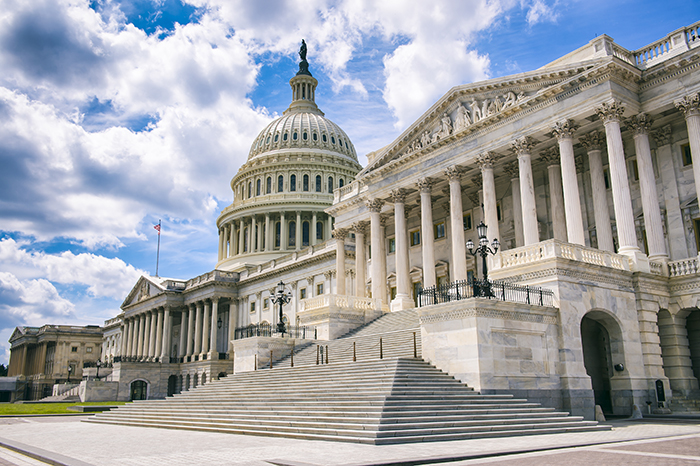New symbol of interracial couples.
Kamala Harris and Doug Emhoff
Posted on December 31, 2020
 On the last night of the Democratic National Convention, Aisha Cozad watched on television as Joe Biden and his vice-presidential choice Kamala D. Harris held their clasped hands triumphantly aloft. But her eyes were also on Doug Emhoff, Harris’s husband, who was standing off to one side clapping adoringly. It was clear who was in the spotlight and who was the cheerleader.
On the last night of the Democratic National Convention, Aisha Cozad watched on television as Joe Biden and his vice-presidential choice Kamala D. Harris held their clasped hands triumphantly aloft. But her eyes were also on Doug Emhoff, Harris’s husband, who was standing off to one side clapping adoringly. It was clear who was in the spotlight and who was the cheerleader.
Cozad was moved because Emhoff was a man so publicly supporting his powerful, ambitious wife. And she was moved because Emhoff is White and Harris is Black.
“Given the current state of race relations, it’s a powerful thing to say that we don’t have to accept these roles as society would have us play them out,” said Cozad, a 46-year-old African American whose husband, Scott, 44, is White. “We don’t have to accept what society says it’s comfortable with. We can, in fact, determine our own path.”
When Harris takes office in January, she will make history as the country’s first female vice president, first Black vice president and first vice president of Asian heritage. But together Harris, the daughter of Jamaican and Indian immigrants who identifies culturally as Black, and Emhoff, a Jewish entertainment lawyer, represent yet another less-heralded first: the first interracial couple at the highest reaches of the executive branch.
Their union is being celebrated by a small but growing segment of the U.S. population: intermarried couples, who now make up about 17 percent of new marriages and about 10 percent of all marriages, according to a 2017 Pew Research report.
The Harris-Emhoff marriage is “really monumental” in its symbolism, said Amanda Brown Lierman, 35, who lives with her husband, Kyle, in Takoma Park, Md. “It’s good for everyone to see that on a national level and normalize it.”
Dana Tofig echoes the word “normalize,” and then takes it another step. “Not only is it the first time you have had an interracial couple at the highest levels of power, but it’s a White male who is saying my Black wife’s job is so important that I’m willing as a White man to give up my job in service of that,” said Tofig, 53, who lives with his wife, Cindy Murphy-Tofig, in Rockville, Md. He was referring to Emhoff’s post-election announcement that he would leave his law firm.
Like the Cozads, the Liermans and the Tofigs, the vice president-elect and her soon-to-be second gentleman are part of a rare demographic among intermarried couples — those between Black women and White men.
These marriages make up just 3 percent of all newlywed heterosexual intermarriages in the United States, according to Pew. The most notable example is of Richard and Mildred Loving, whose lawsuit against the state of Virginia led the Supreme Court to legalize interracial marriage nationally in 1967. (The largest group of newlywed intermarriages, at 42 percent, consists of Hispanics married to non-Hispanic whites).
Popular culture has since raced ahead of reality. The 1970s television show “The Jeffersons” debuted the first prime-time marriage between a Black woman and a White man: Helen and Tom Willis. (Roxie Roker, who played Helen Willis, was married to a White man in real life, Sy Kravitz, and the couple gave birth to a son, musician Lenny Kravitz.)
The past decade saw an explosion of interracial couples on television, including many on shows by African American producer Shonda Rimes. Her hit show “Scandal” featured Kerry Washington as Olivia Pope, the Black risk-taking crisis manager hopelessly in love with the president of the United States, a White man.
The envelope that was pushed by “The Jeffersons” “has since been licked, sealed and delivered,” said Bob Thompson, professor of television and popular culture at Syracuse University.
White men and Black women who marry tend to be older than their same race counterparts and are more likely to have been previously married. Emhoff and Harris, who are both 56, married in 2014, and Harris is Emhoff’s second wife.
They join some other prominent political couples who have married across racial lines: Supreme Court Justice Clarence Thomas, an African American man married to White conservative activist Virginia Thomas; Senate Majority Leader Mitch McConnell, a White man married to Transportation Secretary Elaine Chao, who was born in Taiwan; and former Defense Secretary William Cohen, a White man married to Janet Langhart Cohen, a Black television journalist.
While White men married to Black women can face some challenges related to race, they are substantially less likely to divorce by the 10th year of marriage than those in White marriages, Black marriages and marriages in which the husband is Black and the wife is White, according to a 2008 study. The reasons are unclear, but experts speculate the barriers that keep White men and Black women from marrying at higher rates may mean that those who do are especially committed.
Black women and men must contend with sexual stereotypes dating to slavery — that Black women are promiscuous (a myth created as White slaveowners were raping enslaved women [State of Missouri v. Celia, a Slave: Could she claim self-defense for killing the white slave owner raping her? - The Washington Post]) and that Black men are sexual beasts who rape vulnerable White women (used in part to keep Black men from voting and gaining power).
But the historic burdens carried by Black-White couples belie the fact that the vast majority of interracial marriages are loving and boringly normal, said Cheryl Judice, a sociologist and adjunct professor at Northwestern University. Judice, who researches interracial relationships, interviewed 50 couples for her 2018 book “Interracial Relationships Between Black Women and White Men.”
Judice said she hoped her research would persuade more Black women to consider dating and marrying outside of their race.
“Black women are the only women in this country who can’t take finding a partner within their own race for granted,” she said. Even so, they are the least likely group of women to marry outside of their race, Judice notes. Often, she said, they prefer Black men because of attraction and upbringing, a desire to keep resources within the race or to lend their support to Black men. But too frequently, the numbers don’t work in their favor.
Black women are more likely than Black men to be college-educated professionals, which can prove an obstacle to marrying, and a disproportionate number of Black men are imprisoned or unemployed. Black men are more than twice as likely as Black women to marry interracially, with 8.6 percent marrying outside their race. Another reason Black women may intermarry at lower rates include stereotypes that hold that Black women are less attractive and feminine than White women.
White men who marry Black women do not subscribe to such notions.
Dana Tofig met Cindy at work, typical for people in interracial marriages, Judice said. Both were journalists in their 20s, employed by the Hartford Courant. He was the night police reporter; she was a copy editor. “Not to be shallow, but I thought she was really beautiful,” Dana said.
Cindy was a quiet and a thoughtful listener, while Dana was coursing with energy and almost always up for fun. The couple had both been raised to study hard and hold themselves to high standards. They married in 1996 and have two sons, Will and Daniel, ages 17 and 14. Dana works in communications for a nonprofit organization, while Cindy, 51, is an editor at a nonprofit.
They talk about race as they navigate a country where racism remains deeply embedded.
“I do try to check myself if I have an initial reaction” that might be based on a racial stereotype, Dana said. Cindy agrees that Dana is very self-aware, although she notes “he’s not had the experience of being followed around at the 7-Eleven because the clerk thinks that you’re going to steal something.”
In other words, he is not Black.
“Where these relationships work,” said Judice “there is a willingness to try and see life how the other person views it.”
Interracial couples are more apt to live in racially integrated neighborhoods, according to a 2013 study published in the journal Demography.
Cindy said she and her husband mostly socialize with White people, but that she nurtures relationships with her Black friends and relatives so she does not feel racially isolated.
The Liermans decided to buy a house in the famously leftie neighborhood of Takoma Park because they liked its racial and ethnic diversity. Even so, Amanda is careful to make sure that daughters, Belle, 3, and Leia, 1, are well exposed to Black culture. She ensures they spend time with Black relatives and friends, and she and Kyle keep their shelves stocked with books that have Black characters. Belle just started lessons at a Black-owned dance school. The girls’ nanny is Ethiopian.
“I want my kids to know that they’re Black and to be proud of the fact that they’re Black,” Amanda, 35, said.
Amanda and Kyle, 33, decided to raise their children to identify as Black since society will probably view them that way. Yet Amanda said she sometimes struggles to help Kyle see race the way she does. During the nation’s racial reckoning, Amanda said, “I found myself asking Kyle, are you understanding this the same way I understand it?”
She suggests articles and movies to “create opportunities for us to have some of those conversations.” As they watched the character playing Black Panther leader Bobby Seale being bound and gagged in a courtroom during “The Chicago Seven” on Netflix, Amanda said she turned to Kyle and said “Are you seeing this? This is the kind of stuff that actually happens.”
As a White man married to a Black woman, “You’re in a constant state of learning,” Kyle said, “and it’s a blessing to be able to see through your partner’s eyes and understand how they experience life differently.”
Amanda said her husband’s openheartedness was part of the attraction. They started dating two years after meeting in 2011, when he was an Obama staffer helping to run the White House Office of Public Engagement, and she held a similar role at the Department of Energy. They said they share a devotion to public service and creating a more equitable society. (They also prayed at their 2015 wedding that Biden would run for president.)
“She is just fierce,” Kyle, CEO of nonpartisan voting organization When We All Vote, said of Amanda, managing director of Supermajority, a women’s activism group. “She’s smart and strong and she didn’t put up with any of my s---.”
When Scott Cozad came upon wife Aisha’s online dating profile, he was impressed by her forthrightness.
“She seemed to know exactly what she wanted,” he said — a serious relationship for a serious woman, race unimportant. Aisha liked that Scott wasn’t intimidated by her PhD.
“He loves me for my brain,” Aisha, a senior research adviser at AARP and an adjunct professor, said half-jokingly.
Scott, who is a systems engineer for a defense contractor, said he is a “super nerd, too.” Scott had been married before and so had Aisha, whose son, Brandon, by her first husband, is now 17. The couple married in 2015 and live in a mostly White neighborhood in Woodbridge, Va.
“The things we have trouble with as a couple aren’t about race, but the ordinary things like ‘These dishes still haven’t been put up,” Aisha said. “I think that White men who genuinely fall in love with and marry Black women — I’m not talking fetishes — have a different perspective, a more open mind or self-awareness.”
The Cozads are eager to watch Harris and Emhoff live out their interracial marriage on the national stage.
Watching the way Harris and Emhoff tease each other and show affection “visually reminds me of my wife and I together,” Scott said. “It doesn’t look contrived to me. It looks very, very natural.”
Aisha agrees. “The way he looks at her reminds me of how my husband looks at me.”
Subscribe to the digital Washington Post.
Sydney Trent, Washington, D.C. Local enterprise reporter.
Education: University of Virginia, BA history and Spanish.
She has been a journalist at The Washington Post since 1999. Most recently, she was Senior Editor/Social Issues, supervising award-winning coverage of religion, gender, poverty and other topics. Sydney has served as Deputy Editor of The Washington Post Magazine and Narrative Editor for the Style section, where she also edited politics and media coverage. She has taught and served on panels at Stanford University, Harvard University, American University, University of Virginia, University of Maryland and The Poynter Institute.
SEE ALSO:
More Race Relations Articles
Sexual Bias Articles
Mental Health Articles
How Drugs and Alcohol Affect the Brain and Body
WA. Counselor Directory: find a therapist near you
How helpful is this web page to you?
(and how can we can improve this page for you?)
not helpful
very helpful
Other Articles
A monstrous breach of the First Amendment
“Congress shall make no law respecting an establishment of religion, or prohibiting the free exercise thereof; or abridging the freedom of speech, or of the press; or the right of people peaceably to a... read more
What does the phrase, Law and Order mean to you?
You may not have consciously considered this before, but to me, “Law and Order” means, people will know the law and obey it so we are safe as possible from conflict with our fellow human beings a... read more
Anti-Private Sector-Career-shaming of talented Biden Appointees Needs to Stop
As I watch nominees and appointees announced by the Biden-Harris transition team get maligned in the press and on social media for their past work in the private sector, I’m reminded that often our big... read more
How history has led to an extraordinary moment
Aaron Dixon has seen a lot in his 71 years. The leader of Seattle’s Black Panther Party in the height of the turbulent 1960s, Dixon lived through the uprisings after the murder of the Rev. Dr. Martin L... read more




